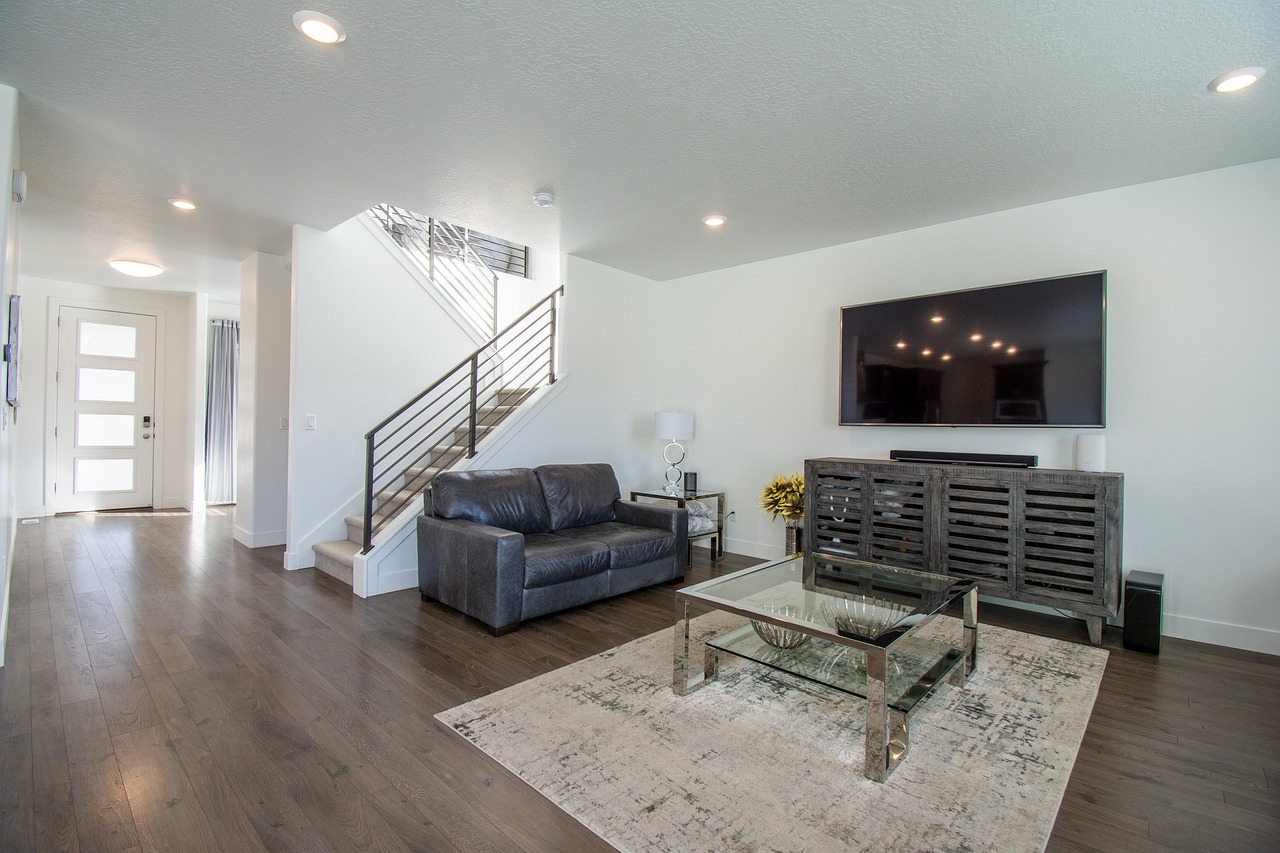This article delves into the diverse world of room dividers, offering insights on styles, selection tips, and purchasing options available across the United States. Whether you seek to enhance functionality or add a touch of aesthetic appeal to your space, understanding the various room divider styles can significantly transform your environment.
Understanding Room Dividers
Room dividers are essential elements in modern interior design, serving both functional and decorative roles. They allow homeowners to create distinct areas within a larger space, providing privacy and organization. The benefits of room dividers extend beyond mere separation; they can enhance the overall flow and feel of a room, making it feel more cohesive. In this section, we will explore the various types of room dividers and their impact on interior aesthetics.
Types of Room Dividers
Room dividers come in an array of styles, each tailored to meet specific needs and preferences. The most common types include:
- Folding Screens: These versatile dividers are portable and can easily be moved or adjusted as needed. Made from materials such as wood, fabric, or metal, they can fit into various decor styles.
- Curtains: An economical choice, curtains can be drawn back or closed to create a flexible barrier, perfect for temporary or adjustable separation.
- Shelves: Bookshelves or open shelving units can act as functional dividers while providing storage, blending utility with style.
Choosing the Right Room Divider
Selecting the ideal room divider requires careful consideration of several factors:
- Assessing Space Requirements: Measure the area to ensure the divider fits well without overwhelming the room.
- Style and Decor Compatibility: Choose a divider that aligns with your existing design themes, whether they are modern, rustic, or eclectic.
Where to Buy Room Dividers in the US
Finding the perfect room divider can be simplified by knowing where to shop. Popular options include:
- Online Retailers: Websites like Amazon, Wayfair, and Overstock offer extensive selections with customer reviews to guide your purchase.
- Local Home Decor Stores: Stores such as IKEA and HomeGoods provide the opportunity to see and touch materials, ensuring a better fit for your space.
DIY Room Divider Ideas
For those looking to personalize their space, creating a DIY room divider can be a fun project. Consider these ideas:
- Using Bookshelves: Open bookshelves can serve as both a storage solution and a stylish divider, allowing light to flow through while defining areas.
- Fabric Panels: Custom fabric panels can be designed to match your decor, offering a unique and personalized touch.
Maintenance and Care for Room Dividers
To ensure the longevity of your room dividers, proper maintenance is essential. Here are some tips:
- Cleaning Techniques: Different materials require specific care; for instance, fabric dividers may need vacuuming, while wooden ones benefit from polishing.
- Storage Solutions: When not in use, store folding screens properly, and hang curtains neatly to avoid creasing.
By understanding the various styles, selection criteria, and maintenance tips, you can effectively choose the right room divider to enhance your living space. Whether you opt for a stylish folding screen or a practical bookshelf, the right room divider can add functionality and beauty to any room.

Understanding Room Dividers
Room dividers are an essential element in modern interior design, serving both functional and decorative purposes. They provide a means to separate spaces within a room, enhancing both privacy and aesthetics. In this section, we will explore the myriad benefits of room dividers, the various types available, and their significant impact on interior design.
- Space Optimization: Room dividers allow you to maximize the utility of your space by creating designated areas for different activities. This is particularly useful in open-concept layouts, where defining spaces can enhance functionality.
- Privacy: For individuals living in shared spaces, room dividers can offer a sense of privacy without the need for permanent walls. This is especially beneficial in studio apartments or multi-functional rooms.
- Sound Absorption: Certain types of room dividers, such as fabric panels or acoustic screens, can help reduce noise levels, making them ideal for home offices or study areas.
- Decorative Appeal: Beyond their practical uses, room dividers can serve as striking decorative elements. They come in various designs, colors, and materials, allowing for creative expression within your space.
Room dividers come in an array of styles to suit different needs and preferences:
- Folding Screens: These are portable and versatile, perfect for temporary separation. Available in materials like wood, metal, and fabric, they can easily adapt to various decor styles.
- Curtains: A cost-effective solution, curtains can be drawn open or closed for flexibility. They offer a soft touch and can be customized with different fabrics and patterns.
- Shelves: Bookshelves or open shelving units not only divide spaces but also provide storage. They can display decorative items while maintaining an open feel.
- Sliding Panels: These panels glide along a track and can be opened or closed as needed, offering a sleek and modern option for space division.
Incorporating room dividers into your interior design can significantly transform the ambiance of a space:
- Visual Interest: A well-chosen room divider can serve as a focal point, drawing the eye and enhancing the overall design aesthetic.
- Color and Texture: Room dividers introduce new colors and textures, enriching the visual palette of a room. This can help in tying together various elements of decor.
- Flexibility: As design trends evolve, room dividers offer a flexible solution that can be easily changed or relocated, allowing homeowners to refresh their spaces without major renovations.
In summary, understanding room dividers is crucial for anyone looking to optimize their living space. With their numerous benefits, varied types, and significant impact on interior design, room dividers are a valuable addition to any home. Whether you seek privacy, style, or functionality, the right room divider can enhance your environment and reflect your personal taste.
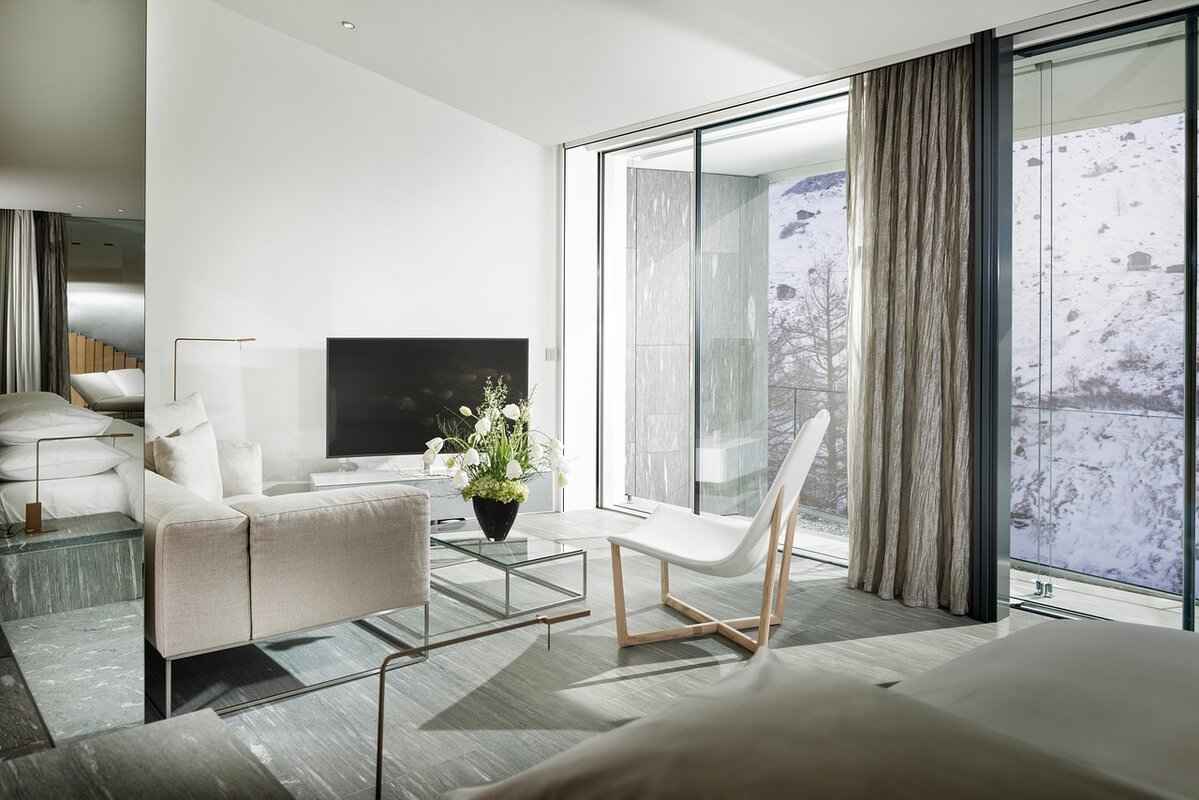
Types of Room Dividers
Room dividers are essential elements in interior design, providing both functionality and aesthetic appeal. They allow for the separation of spaces without the need for permanent walls, making them ideal for apartments, studios, and open-concept homes. In this section, we will explore the various types of room dividers available, highlighting their unique advantages and suitability for different environments.
- Folding Screens: Folding screens are versatile and portable, making them a popular choice for temporary space separation. These dividers can be easily moved and adjusted to suit your needs. Available in a variety of materials such as wood, fabric, and metal, folding screens can complement any decor style, from traditional to contemporary.
- Curtains: Curtains offer a flexible and cost-effective solution for dividing spaces. They can be drawn open or closed, allowing for seamless transitions between areas. With an extensive range of fabrics, colors, and patterns available, curtains can easily blend with your existing decor or serve as a bold statement piece.
- Shelves: Bookshelves or open shelving units can double as room dividers while providing functional storage. They allow light to filter through, maintaining an airy feel in your space. Additionally, they can be styled with books, plants, and decorative items, enhancing the visual interest of the room.
- Glass Partitions: For a modern and sleek look, glass partitions are an excellent choice. They create a sense of openness while effectively separating spaces. Frosted or tinted glass options can provide privacy without sacrificing natural light, making them ideal for offices or home studios.
- Sliding Panels: Sliding panels are a contemporary option that offers flexibility in space management. They can be opened or closed as needed, allowing for customizable room layouts. Available in various materials, including wood and fabric, sliding panels can add a stylish touch to any room.
- Room Divider Screens: These are similar to folding screens but often come in more elaborate designs. They can feature intricate patterns or artwork, making them a focal point in the room. Room divider screens can be used to create cozy nooks or to separate living areas from dining spaces.
When selecting a room divider, consider the specific needs of your space. Think about the level of privacy required, the amount of light you want to let in, and how the divider will fit with your overall decor style. Each type of room divider has its own set of advantages, making it essential to choose one that aligns with your functional requirements and aesthetic preferences.
In summary, room dividers come in various styles, including folding screens, curtains, shelves, glass partitions, sliding panels, and decorative screens. Each type offers unique benefits that cater to different needs and aesthetics, allowing you to create functional and beautiful spaces in your home.
Folding Screens
are an increasingly popular choice for room dividers, offering a blend of functionality and style. Their versatility makes them suitable for various settings, whether in homes, offices, or event spaces. These portable dividers can be easily moved and adjusted to create temporary separations, making them ideal for those who frequently change their space layout.
One of the most appealing aspects of folding screens is their diverse material options. They can be crafted from a variety of materials such as:
- Wood: Provides a classic and warm aesthetic, perfect for rustic or traditional decor.
- Fabric: Softens the look of a room and allows for a wide range of colors and patterns, making them suitable for any design scheme.
- Metal: Offers a sleek and modern touch, ideal for contemporary spaces.
When selecting a folding screen, consider the design variations available. From intricate, hand-painted screens to minimalist, modern designs, the options are vast. A well-chosen folding screen can not only serve its functional purpose but also act as a striking focal point in the room. For instance, a vibrant fabric screen can inject color into a neutral space, while a wooden screen with carved details can add an element of sophistication.
Another significant advantage of folding screens is their portability. Unlike permanent walls, these dividers can be easily relocated, allowing you to adapt your space according to your needs. This flexibility makes them particularly useful in multi-functional areas, such as shared offices or studio apartments, where the need for privacy or separation can vary throughout the day.
Moreover, folding screens can also enhance acoustic privacy. By placing a screen between workspaces, you can reduce noise levels, creating a more focused environment. This feature is especially beneficial in open-plan offices or busy living areas, where distractions can hinder productivity.
In terms of maintenance, caring for folding screens is generally straightforward. Depending on the material, a simple dusting or occasional deep cleaning can keep them looking their best. For wooden screens, ensure to use appropriate cleaning products to avoid damaging the finish, while fabric screens may require spot cleaning or gentle laundering.
In summary, folding screens are a versatile and stylish solution for space division. Their range of materials, designs, and portability makes them an excellent choice for anyone looking to enhance their living or working environment. Whether you are aiming for a cozy nook or a professional workspace, a folding screen can provide the separation and aesthetic appeal you desire.
Material Choices for Folding Screens
The selection of materials for folding screens is crucial, as it not only influences the **aesthetic appeal** but also the **durability** and functionality of the screen. When considering different materials, homeowners and designers can create spaces that are not only visually striking but also practical for everyday use.
- Wood: Wood is a classic choice for folding screens, offering a sense of warmth and natural beauty. Its versatility allows it to fit seamlessly into various design styles, from rustic to contemporary. Different types of wood, such as oak, pine, or walnut, can provide distinct appearances and durability levels. Additionally, wood can be stained or painted to match existing decor, making it a flexible option for customization.
- Metal: For those seeking a more modern or industrial look, metal folding screens are an excellent option. Materials like aluminum or wrought iron can create sleek and minimalist designs that stand out in any room. Metal screens are typically more durable and resistant to wear and tear, making them suitable for high-traffic areas. Their reflective surfaces can also enhance lighting, adding a unique dimension to the space.
- Fabric: Incorporating fabric into folding screens introduces a layer of softness and texture that can soften the overall look of a room. Fabric screens can be made from various materials, including cotton, linen, or synthetic fibers, allowing for a plethora of colors and patterns. This option is particularly appealing for those looking to add a pop of color or a touch of elegance to their decor. However, it is essential to consider the maintenance of fabric screens, as they may require regular cleaning to keep them looking fresh.
- Composite Materials: Some folding screens are made from composite materials, which combine the benefits of wood, metal, and fabric. These materials can offer the aesthetic appeal of wood with the durability of metal, making them a practical choice for many homeowners. Composite screens are often lightweight and easy to move, adding to their versatility.
When selecting a folding screen, it’s essential to consider how the material will interact with the room’s overall design. For example, a wooden screen may complement a cozy, rustic living room, while a metal screen might better suit a modern, urban apartment. Additionally, consider the practical aspects, such as how often the screen will be moved or adjusted, as this can influence the choice of material.
In conclusion, the material you choose for a folding screen can significantly impact both its functionality and aesthetic appeal. By understanding the characteristics of each material, you can make an informed decision that enhances your living space while reflecting your personal style.
Design Variations
When it comes to enhancing your living space, in folding screens offer an exciting opportunity to express your style. These versatile room dividers can dramatically alter the ambiance of a room, making them a popular choice for homeowners and interior designers alike. With a wide array of designs available, understanding how to choose the right one can elevate your decor and provide functional benefits.
Folding screens are not just practical; they are also a design statement. From intricate patterns to bold colors, the aesthetic appeal of these dividers can range from the traditional to the modern. For instance, a classic Chinese screen, adorned with hand-painted scenes, can add a touch of elegance and history to a room. In contrast, a minimalist metal screen can provide a sleek, contemporary look that fits well in modern decor.
The material of a folding screen plays a crucial role in its visual impact. Common materials include:
- Wood: Offers warmth and a natural feel, suitable for rustic or traditional themes.
- Fabric: Provides softness and texture, allowing for vibrant patterns and colors that can soften a space.
- Metal: Delivers a modern, industrial vibe that can make a bold statement in contemporary settings.
Each material brings its own character, allowing you to select a screen that complements your existing decor while adding a unique flair.
Patterns and colors are essential elements to consider when choosing a folding screen. Geometric patterns can create a modern, dynamic look, while floral designs can evoke a sense of tranquility and nature. Additionally, the color scheme should align with the overall palette of the room. A neutral screen can blend seamlessly, while a vibrant, colorful piece can serve as a stunning focal point.
Beyond aesthetics, consider the functional aspects of your folding screen. Do you need it for privacy, to define spaces, or simply as a decorative element? Screens that are easily movable can offer flexibility, allowing you to change your layout as needed. Additionally, some designs incorporate storage solutions, combining style with practicality.
For those seeking a personalized touch, many manufacturers offer customizable options. This can include selecting specific fabrics, colors, or sizes to fit your unique space. Custom screens can be especially beneficial in small apartments or unconventional layouts, where standard sizes may not suffice.
Finding the perfect folding screen involves exploring various sources. Local home decor stores often carry unique pieces that you can see and touch, ensuring the quality meets your expectations. Online platforms like Wayfair and Amazon offer extensive selections, often with customer reviews that can guide your decision. Additionally, artisan marketplaces such as Etsy can provide one-of-a-kind designs that add a personal touch to your home.
In conclusion, the design variations of folding screens present a wealth of options for enhancing your space. By considering materials, patterns, colors, and functionality, you can select a screen that not only meets your practical needs but also elevates the aesthetic of your home.
Room Divider Curtains
Curtains are a versatile and affordable solution for dividing spaces within a room. Unlike permanent fixtures, curtains can be easily manipulated, allowing for seamless transitions between different areas. This adaptability makes them an excellent choice for homes, offices, and even event spaces.
One of the primary advantages of using curtains as room dividers is their flexibility. They can be drawn open to create an open layout or closed to provide privacy and separation. This feature is particularly useful in studio apartments or shared living spaces where the need for both openness and privacy is essential. By simply pulling the curtains, you can transform a large area into smaller, more intimate sections, catering to various activities like working, relaxing, or entertaining.
In addition to functionality, curtains also offer a wide range of design possibilities. Available in numerous colors, patterns, and fabrics, they can easily complement or enhance the existing decor of a room. For instance, sheer curtains allow light to filter through while providing a sense of separation, making them ideal for spaces where you want to maintain an airy feel. On the other hand, heavy drapes can create a cozy atmosphere, perfect for bedrooms or home theaters.
When selecting curtains as room dividers, consider the material and length. Lightweight fabrics like cotton or linen are great for casual spaces, while velvets or heavier materials add a touch of elegance. Additionally, the length of the curtains can affect the overall aesthetic; floor-to-ceiling curtains can create an illusion of height, making the room feel more expansive.
Installation is another easy aspect of using curtains as dividers. Most curtain rods can be mounted on walls or ceilings, and with minimal tools, you can set them up in no time. For a more temporary solution, tension rods can be used, allowing you to hang curtains without drilling holes. This makes them ideal for renters or those who prefer not to make permanent changes to their living spaces.
Moreover, curtains can also serve a functional purpose beyond just dividing spaces. They can help with sound absorption, reducing noise levels in busy environments. This is particularly beneficial in open-plan offices or homes with children, where noise can be a distraction. Additionally, curtains can help regulate temperature by blocking drafts or retaining heat, contributing to a more comfortable living environment.
In summary, curtains are an excellent option for those looking to create flexible and cost-effective room dividers. Their ability to adapt to various needs, combined with a plethora of design choices, makes them suitable for any space. Whether you want to enhance privacy, improve acoustics, or simply add a decorative element, room divider curtains can effectively meet your needs.
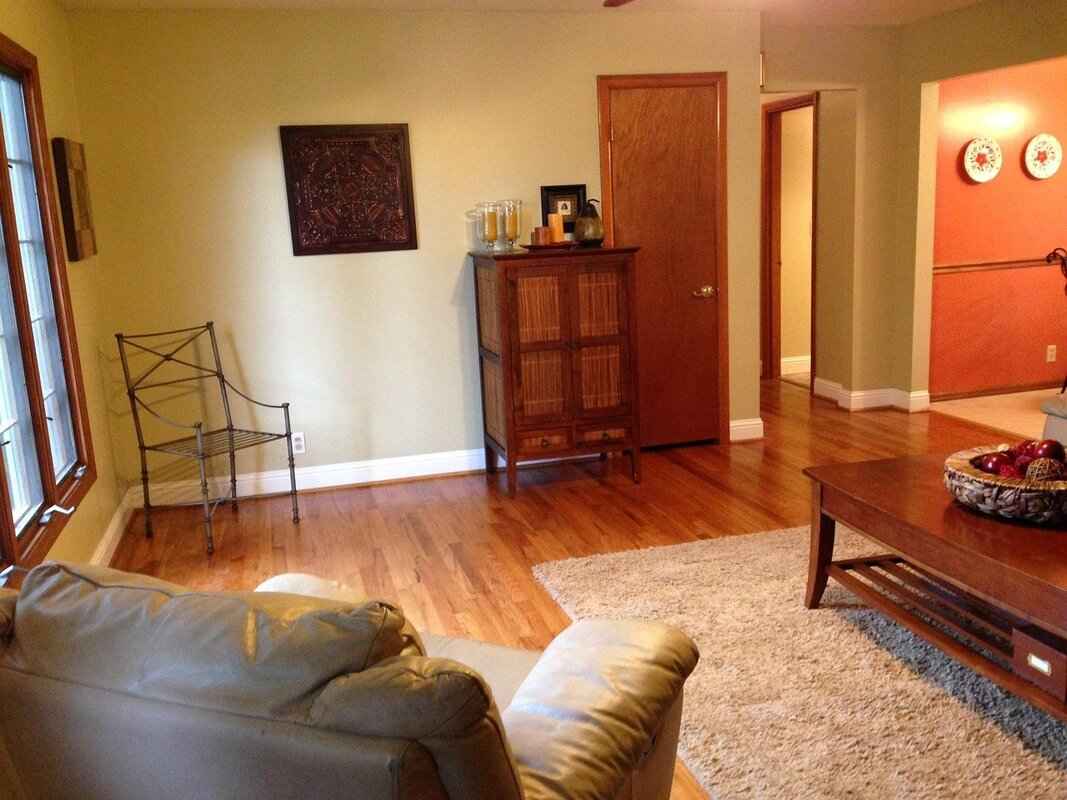
Choosing the Right Room Divider
Selecting the right room divider is a crucial step in enhancing your living space. It not only serves a functional purpose but also contributes to the overall aesthetic of your home. When making this decision, several factors come into play, including functionality, aesthetics, and spatial constraints. Below are key considerations to help you navigate the selection process effectively.
- Functionality: The primary role of a room divider is to create separate areas within a space. Consider what you need the divider for: Is it to provide privacy, define spaces, or simply add a decorative touch? Understanding its intended use will guide your choices.
- Aesthetics: The design and style of the room divider should complement your existing decor. Whether your home showcases a modern, traditional, or eclectic theme, choose a divider that enhances the ambiance rather than detracts from it. Materials like wood, metal, or fabric can significantly impact the visual appeal.
- Space Constraints: Assessing the dimensions of your room is essential. Measure the area where you plan to place the divider to ensure it fits well without overwhelming the space. A large divider in a small room can make it feel cramped, while a small divider in a spacious area may not provide the desired separation.
Assessing Space Requirements
Understanding the layout and dimensions of your space is vital. Take precise measurements of the area where the divider will be installed. Consider the height, width, and depth of the divider to ensure it fits seamlessly into your room. Additionally, think about how the divider will interact with existing furniture and architectural features.
Style and Decor Compatibility
Your room divider should harmonize with your home’s overall design theme. If your decor is modern, opt for sleek, minimalist dividers made of glass or metal. For a rustic look, consider wooden dividers with natural finishes. If your style is eclectic, you might choose a bold patterned fabric divider that adds a pop of color and personality to the room.
Material Selection
The choice of material is another critical factor. Different materials offer varying levels of durability, maintenance, and aesthetic appeal. For example, wood provides warmth and can be stained or painted to match your decor, while metal offers a contemporary feel. Fabric dividers can introduce softness and texture but may require more upkeep.
Portability and Flexibility
Consider whether you need a permanent or temporary solution. Folding screens are ideal for those who may want to reconfigure their space frequently, as they can be easily moved. On the other hand, curtains can be drawn open or closed, providing versatility in how you use the space.
Budget Considerations
Finally, establish a budget before you start shopping. Room dividers come in a wide range of prices, so knowing your financial limits will help narrow down your options. Consider not only the initial cost but also the long-term value and durability of the divider. Investing in a quality piece can save you money in the long run.
In summary, choosing the right room divider involves careful consideration of functionality, aesthetics, space constraints, material choices, and budget. By assessing these factors, you can select a divider that enhances your living space, providing both utility and style.
Assessing Space Requirements
When it comes to selecting the perfect room divider, is a critical step that should not be overlooked. Understanding the dimensions and layout of your space is essential for achieving both functionality and aesthetic appeal. Proper measurements will ensure that your chosen divider fits seamlessly into the environment without overwhelming the room or disrupting its flow.
To start, take accurate measurements of the area where the divider will be placed. This involves not only measuring the width and height of the space but also considering any architectural features such as windows, doors, or built-in furniture that could impact the placement of the divider. A well-placed room divider can enhance the visual appeal of your space while also serving practical purposes, such as creating privacy or defining separate areas within an open floor plan.
Here are some important factors to consider when assessing your space requirements:
- Room Dimensions: Measure the length, width, and height of the room. This will give you a clear idea of the size of the divider that will work best.
- Placement Options: Identify potential locations for the divider. Consider how it will fit within the existing layout and whether it will obstruct pathways or natural light.
- Proportions: Ensure that the divider is proportionate to the size of the room. A large divider in a small room can make the space feel cramped, while a small divider in a large room may not provide the desired effect.
- Functionality: Think about how you plan to use the divider. Will it need to be moved frequently, or will it remain in a fixed position? This will influence your choice of materials and design.
Once you have gathered all necessary measurements and considered these factors, you can start exploring different styles and types of room dividers that will meet your needs. Remember, the goal is to create a harmonious balance between functionality and aesthetics, ensuring that the divider enhances the overall ambiance of your space.
In addition to measuring your space, it’s important to visualize how the divider will look in your room. Utilizing design software or creating a simple floor plan can help you see how different options will fit within your existing decor. You may also want to consider the color and texture of the divider, as these elements can significantly impact the overall feel of the room.
Ultimately, taking the time to assess your space requirements thoroughly will lead to a more satisfying selection process, ensuring you choose a room divider that not only fits well but also enhances your living environment.
Style and Decor Compatibility
When it comes to interior design, the room divider is more than just a functional element; it plays a crucial role in enhancing the overall aesthetic of your space. Therefore, it is essential to ensure that your chosen divider aligns with your home’s design theme. Whether your style is modern, rustic, or eclectic, selecting a divider that complements your decor can significantly improve visual harmony.
To begin with, consider the color palette of your existing decor. A room divider in a color that matches or complements your walls, furniture, or accessories can create a seamless transition between spaces. For instance, if your living room features warm earth tones, a wooden room divider with a natural finish can enhance the cozy atmosphere. On the other hand, if your space is characterized by cool, minimalist tones, a sleek, white or metallic divider can maintain that modern aesthetic.
- Texture: The texture of the room divider can also play a significant role in its compatibility with your decor. A fabric divider can add softness to a room filled with hard surfaces, while a metal or glass divider can provide a contemporary edge to a more traditional setting.
- Style: The architectural style of the room should dictate the design of the divider. For example, a folding screen with intricate carvings can enhance a bohemian or vintage theme, while a simple, geometric divider can suit a Scandinavian or modern design.
- Functionality: Beyond aesthetics, consider how the divider will function in your space. If it’s meant to create a temporary separation, opt for something lightweight and movable, like curtains or a folding screen. If it’s intended to provide permanent division, a built-in shelving unit or a more substantial partition might be appropriate.
Furthermore, incorporating elements that reflect your personal style can make the room divider a statement piece. For example, a divider adorned with artwork or decorative panels can serve as a focal point, drawing the eye and enhancing the room’s character.
Lastly, don’t forget about lighting. The way a room divider interacts with light can change its appearance and impact the overall ambiance. A translucent divider can allow light to filter through, creating an airy feel, while a solid divider can create a more intimate space. Choosing a design that works well with your lighting setup will further enhance the compatibility of the divider with your home’s decor.
In summary, the room divider should not only serve its functional purpose but also harmonize with your home’s design theme. By carefully considering color, texture, style, functionality, and lighting, you can select a divider that enhances both the beauty and practicality of your space.
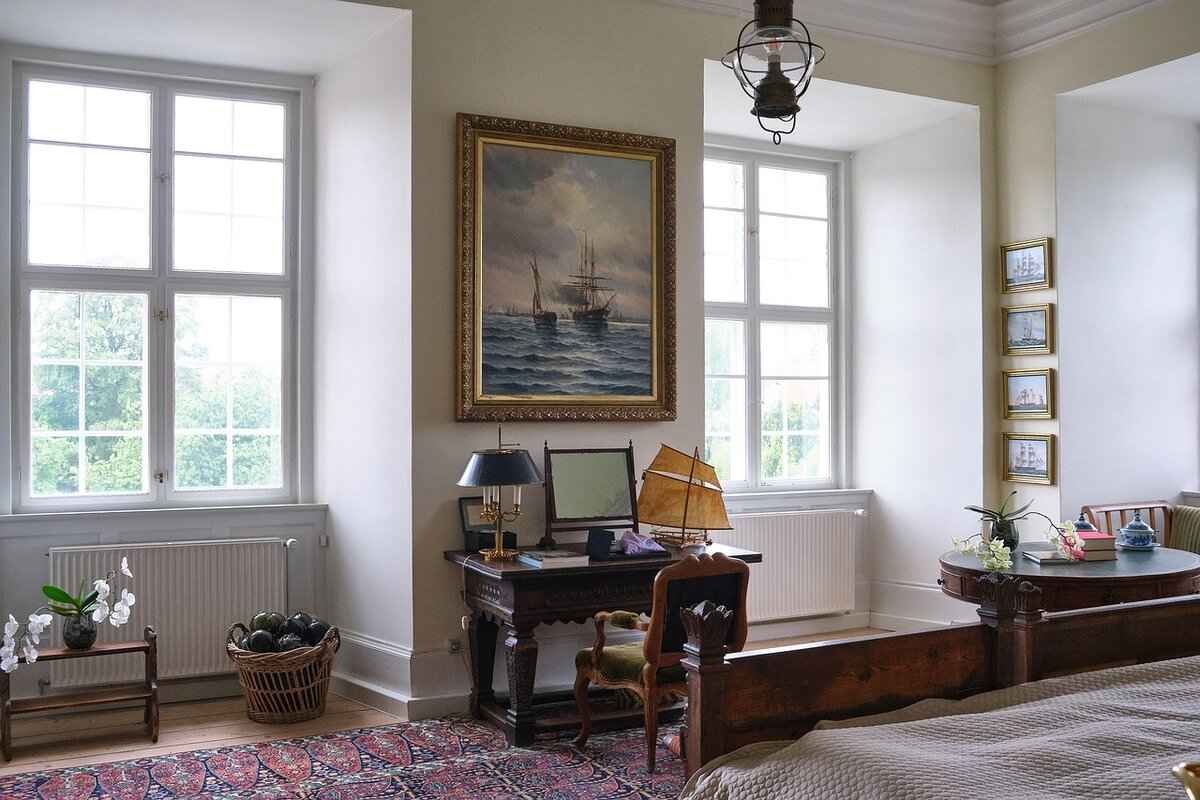
Where to Buy Room Dividers in the US
Finding the right place to purchase room dividers can significantly affect your options. Whether you are looking for something functional, stylish, or a combination of both, knowing where to shop can make a huge difference. In this section, we will explore a variety of popular retailers and online platforms that offer a wide range of room dividers to suit different tastes and budgets.
Online shopping has revolutionized the way we buy home decor, including room dividers. The convenience of browsing through numerous options from the comfort of your home is unmatched. Here are some of the top online retailers where you can find room dividers:
- Amazon: Known for its vast selection, Amazon offers everything from folding screens to curtain dividers. With user reviews and ratings, you can make informed decisions based on the experiences of others.
- Wayfair: Specializing in home goods, Wayfair features a diverse array of room dividers in various styles and materials, often at competitive prices.
- Overstock: Overstock is another excellent option for budget-conscious shoppers. They frequently have sales and discounts, allowing you to find stylish dividers without breaking the bank.
While online shopping is convenient, visiting local home decor stores can provide a tactile experience that online shopping cannot match. Here are some popular stores where you can find room dividers:
- IKEA: Renowned for its modern and functional design, IKEA offers a variety of room dividers, including shelving units and curtains, at affordable prices.
- HomeGoods: This store features unique and often one-of-a-kind items, making it a great place to find distinctive room dividers that can add character to your space.
- Target: Target has a growing selection of home decor, including stylish and budget-friendly room dividers. Their seasonal collections often include trendy options.
If you’re looking for something unique or customized, specialty stores and boutiques can be great resources. These shops often feature artisanal and handcrafted room dividers that stand out:
- Local Artisans: Many local artisans create custom room dividers that can be tailored to your specifications. Supporting local businesses not only gives you a unique product but also helps your community.
- Home Decor Boutiques: Smaller boutiques often curate collections of unique home decor items, including room dividers. These shops can provide personalized service and expert advice.
When looking for room dividers, consider the following factors to ensure you make the right choice:
- Size and Space: Measure the area where you plan to place the divider to ensure it fits well without overwhelming the space.
- Style Compatibility: Choose a divider that complements your existing decor to maintain a cohesive look.
- Material Durability: Different materials have different maintenance needs and durability. Consider how much wear and tear the divider will endure.
In conclusion, whether you prefer the convenience of online shopping or the tactile experience of visiting local stores, there are numerous options available for purchasing room dividers in the US. By exploring various retailers and considering your specific needs, you can find the perfect room divider that enhances both the functionality and aesthetic of your space.
Online Retailers
In today’s fast-paced world, online shopping has revolutionized the way we purchase home decor items, including room dividers. The convenience of browsing from the comfort of your home, coupled with a vast selection of products, makes it an attractive option for many consumers. This section explores the benefits of shopping online for room dividers, highlights popular retailers, and provides tips for making informed purchasing decisions.
Online retailers offer a plethora of advantages when it comes to purchasing room dividers. One of the most significant benefits is the extensive variety available. Unlike physical stores, which may have limited stock, online platforms can showcase a vast range of styles, materials, and price points. This means you can find everything from traditional folding screens to modern sliding panels, ensuring that you can select a divider that perfectly fits your aesthetic and functional needs.
- Amazon: Known for its extensive inventory, Amazon features countless options for room dividers. Customers can benefit from detailed product descriptions and user reviews, which provide insights into the quality and functionality of items.
- Wayfair: Specializing in home goods, Wayfair offers a curated selection of room dividers. Their website includes filters for style, material, and price, making it easy to find the perfect match for your space.
- Overstock: Overstock is another excellent option for budget-conscious shoppers. They frequently offer discounts and deals on various room dividers, allowing you to find unique pieces at competitive prices.
One of the most valuable features of shopping online is the ability to read customer reviews. These reviews can provide first-hand insights into the durability, ease of assembly, and overall satisfaction with a product. Look for items with a high number of positive reviews, as this often indicates a reliable choice. Additionally, pay attention to any recurring themes in the feedback, such as issues with assembly or material quality.
When shopping for room dividers online, consider the following tips to ensure a satisfactory purchase:
- Measure Your Space: Before making a purchase, accurately measure the area where you plan to place the divider. This will help you choose a product that fits well within your space without overwhelming it.
- Check Return Policies: Always review the retailer’s return policy before finalizing your purchase. This is crucial in case the product does not meet your expectations or fit your space as intended.
- Compare Prices: Take the time to compare prices across different platforms. Some retailers may offer the same product at varying prices, and you might find better deals during sales events or seasonal promotions.
In conclusion, online shopping for room dividers opens up a world of possibilities. With an array of styles and materials available at your fingertips, you can easily find the perfect divider to enhance your living space. By utilizing customer reviews and following best practices for online shopping, you can make informed decisions that cater to your aesthetic and functional needs.
Local Home Decor Stores
Visiting is an enriching experience that goes beyond mere shopping. These stores provide an opportunity to engage with materials and designs in a way that online shopping cannot replicate. When you step into a store like IKEA or HomeGoods, you are greeted with a variety of textures, colors, and styles that can inspire your decorating journey.
- Hands-On Experience: One of the most significant advantages of visiting local stores is the ability to see and feel the products firsthand. You can assess the quality of materials, test the comfort of furniture, and visualize how items will fit into your home.
- Unique Selections: Local stores often carry unique items that may not be available online. From handcrafted pieces to limited-edition collections, you can discover distinctive decor that reflects your personal style.
- Personalized Assistance: Shopping in-store allows you to interact with knowledgeable staff who can provide valuable insights and recommendations tailored to your needs. They can help you navigate through various options, ensuring you make informed decisions.
- Supporting Local Businesses: By shopping at local home decor stores, you are supporting your community and contributing to the local economy. This can create a sense of connection and pride in your purchases.
Moreover, local home decor stores often host events and workshops that can enhance your shopping experience. These events allow you to learn from experts, gain inspiration, and connect with fellow decor enthusiasts.
When visiting these stores, consider creating a list of what you are looking for to maximize your time. Take photos of your space and measurements of key areas to ensure that the items you choose will fit perfectly in your home.
In conclusion, local home decor stores offer a rich, immersive experience that can greatly enhance your decorating projects. From the tactile experience of handling materials to personalized service, these stores provide invaluable resources for anyone looking to beautify their space. Whether you’re searching for a statement piece or simply browsing for inspiration, the journey through local home decor stores can lead to delightful discoveries and a well-curated home.

DIY Room Divider Ideas
Creating your own room divider can be a rewarding project that allows you to express your creativity while enhancing your living space. DIY room dividers not only serve a functional purpose but also add a personal touch to your home decor. Below are some innovative ideas that will inspire you to craft a divider that reflects your unique style.
Bookshelves are a fantastic option for room dividers, combining functionality with aesthetic appeal. They provide storage for books and decorative items while effectively separating spaces. Consider using open shelving to maintain a sense of openness. You can style the shelves with plants, books, and art pieces to create a visually pleasing display.
Fabric panels are another versatile option for DIY room dividers. You can choose from a wide variety of colors, patterns, and textures to create a divider that complements your decor. Simply attach the fabric to a lightweight frame or use tension rods to hang the panels. This allows for easy changes in style, making it a flexible solution for evolving tastes.
Old doors can be transformed into stunning room dividers. Sand them down, paint them in vibrant colors, or leave them in their natural state for a rustic look. Hinged doors can be used to create a folding screen effect, while stationary doors can serve as a permanent divider. This approach not only recycles materials but also adds character to your space.
Incorporating plants into your space can create a natural room divider that enhances air quality and adds life to your home. Use tall potted plants or create a vertical garden to separate areas. This not only serves as a divider but also brings a touch of nature indoors, promoting a calming atmosphere.
For a unique and artistic approach, consider hanging art or fabric from the ceiling. This creates a soft divider that can be easily removed or changed. Use lightweight materials to ensure stability, and choose designs that resonate with your personal style. This method adds a dynamic element to your space.
Wooden pallets can be repurposed into stylish room dividers. They are inexpensive and can be customized with paint or stain. Pallets can be arranged vertically or horizontally, depending on your desired look. This rustic solution not only divides space but also adds a charming touch to your decor.
Curtains are a classic and cost-effective way to create room dividers. They offer the flexibility to open or close off spaces as needed. Choose fabrics that match your decor and hang them from a curtain rod or wire for easy access. This option is particularly useful in smaller spaces where versatility is key.
In conclusion, DIY room dividers can be a fun and creative project that enhances both the functionality and aesthetics of your home. By exploring these ideas, you can create a divider that not only serves a practical purpose but also reflects your personal style. Whether you opt for bookshelves, fabric panels, or natural elements, the possibilities are endless!
Using Bookshelves as Dividers
In contemporary interior design, bookshelves have transcended their traditional role of merely holding books. They are increasingly being recognized as versatile room dividers that can enhance both functionality and aesthetics within a space. Utilizing bookshelves as dividers not only provides practical storage solutions but also contributes to the overall ambiance of a room.
One of the most significant advantages of using bookshelves as dividers is their ability to create distinct areas within a larger space. For instance, in an open-plan living area, a well-placed bookshelf can effectively separate the living room from the dining area, providing a sense of privacy without completely closing off the space. This is particularly beneficial in modern homes where open layouts are popular.
Open shelving designs allow light to flow freely, maintaining an airy feel while still providing a visual barrier. Unlike traditional walls that can make a space feel cramped, bookshelves offer a more open and inviting atmosphere. They can be styled with decorative items, plants, and personal mementos, making them not just functional but also a focal point of the room.
Moreover, bookshelves can serve different purposes depending on their placement and design. For example, a tall bookshelf can act as a divider between a home office and a living area, while a shorter shelf can delineate a cozy reading nook within a larger room. This flexibility allows homeowners to tailor their spaces according to their specific needs.
- Storage Solution: Bookshelves provide ample storage space for books, decorative items, and even office supplies, helping to keep areas organized.
- Customizable Design: With various styles, colors, and materials available, bookshelves can be chosen to match the existing decor, enhancing the overall design of the space.
- Easy to Rearrange: Unlike permanent walls, bookshelves can be easily moved or replaced, allowing for a dynamic living environment that can evolve with your needs.
In addition, bookshelves can be a great way to showcase your personal style. By arranging books and decor items in an aesthetically pleasing manner, they can reflect your personality and interests. This makes them not just a practical addition but also a canvas for creativity.
For those considering incorporating bookshelves as room dividers, it’s essential to think about the scale and placement. A massive bookshelf in a small room can overwhelm the space, while a sleek, minimalist design can enhance functionality without sacrificing style. Additionally, consider the materials; wooden bookshelves can add warmth, while metal or glass options can lend a modern touch.
In conclusion, using bookshelves as room dividers is an excellent way to combine functionality with style. They not only help in organizing and dividing spaces but also add a personal touch to your home decor. Whether you’re looking to create a cozy reading corner or separate work from leisure, bookshelves offer a practical and aesthetically pleasing solution.
Fabric Panels for Customization
Using fabric panels as room dividers is an innovative way to enhance your living space while allowing for endless customization. These versatile dividers can be tailored to fit your personal style, making them an excellent choice for anyone looking to add a unique touch to their home.
- Color Selection: One of the most appealing aspects of fabric panels is the variety of colors available. You can choose vibrant hues to energize a room or soft pastels for a calming effect. The right color can create a focal point or blend seamlessly with your existing decor.
- Pattern Choices: From floral designs to geometric shapes, the patterns available in fabric panels are virtually limitless. Selecting a pattern that resonates with your style can significantly enhance the aesthetic appeal of your space.
- Texture Variations: Fabric panels come in various textures, such as linen, velvet, or cotton. Each texture not only contributes to the visual interest but also affects the acoustics of a room, making it feel cozier.
When considering fabric panels for your space, it’s essential to think about how they will function as dividers. For example, lightweight fabric panels can be easily moved or adjusted, allowing for flexible room configurations. This adaptability is particularly beneficial in smaller spaces where the layout might change frequently.
Installation and Maintenance
Installing fabric panels is generally straightforward. Many options come with easy-to-use mounting hardware or can be hung from a curtain rod. This ease of installation means you can quickly change your space without the need for professional assistance.
Maintaining fabric panels is also relatively simple. Regular vacuuming can help keep them looking fresh, while spot cleaning with a damp cloth can address any stains. For more thorough cleaning, some fabric panels may be machine washable, making them a practical choice for busy households.
Creative Uses of Fabric Panels
Beyond traditional room division, fabric panels can be used creatively in various ways. For instance, they can serve as a backdrop for a home office, providing privacy during work hours while still allowing light to filter through. Additionally, they can be used in event spaces to create themed areas or to enhance the overall atmosphere.
In conclusion, fabric panels offer a unique combination of functionality and style. Their customizable nature allows you to express your individuality while providing practical solutions for space management. Whether you’re looking to create a cozy nook or separate a larger room, fabric panels are an excellent choice that can adapt to your evolving needs.
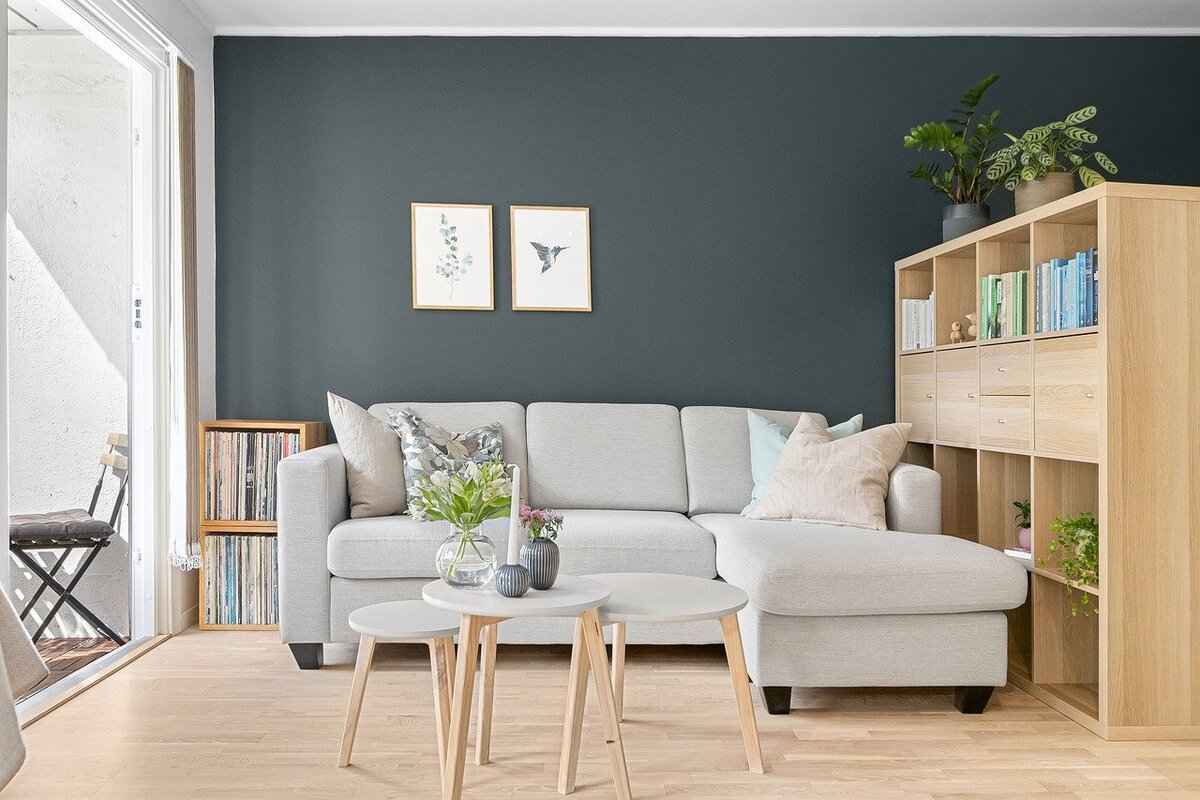
Maintenance and Care for Room Dividers
Proper maintenance is essential for ensuring the longevity and aesthetic appeal of your room dividers. By following a few practical tips tailored to the specific types of dividers you own, you can keep them looking their best and functioning effectively. This section provides detailed insights into the care and maintenance of various room divider styles.
- Understanding Material Needs: Different materials require distinct care methods. For instance, wooden dividers need to be dusted regularly and polished occasionally to maintain their luster. In contrast, fabric dividers may require vacuuming or spot cleaning to remove dust and stains.
- Cleaning Techniques:
- Fabric Dividers: Regularly vacuum with a brush attachment to remove dust. For stains, use a fabric cleaner suitable for the specific type of fabric.
- Wooden Dividers: Use a soft, damp cloth to wipe down surfaces, followed by a dry cloth. Apply furniture polish every few months to maintain shine.
- Metal Dividers: Wipe with a damp cloth and mild detergent. Avoid abrasive cleaners that can scratch the surface.
- Storage Solutions: When not in use, proper storage is crucial.
- Folding Screens: These can be easily collapsed and stored in a dry, cool place. Ensure they are not placed under heavy items that could warp them.
- Curtains: Always hang curtains neatly to avoid creasing. Consider using a garment bag for additional protection.
- Regular Inspections: Periodically check your dividers for signs of wear and tear. Look for loose joints in wooden dividers or frayed edges in fabric ones. Addressing these issues early can prevent more significant damage.
- Environmental Considerations: Be mindful of where your dividers are placed. Avoid direct sunlight, which can fade colors, and keep them away from damp areas to prevent mold growth.
By implementing these maintenance tips, you can significantly extend the life of your room dividers, ensuring they remain a stylish and functional part of your interior design. Regular care not only enhances their appearance but also contributes to a healthier living environment by reducing dust and allergens.
Cleaning Techniques
Maintaining the appearance and functionality of your room dividers is essential for creating an inviting space. Different materials require specific cleaning methods to ensure they remain in top condition. Understanding the correct techniques for each type of divider can significantly enhance their longevity and aesthetic appeal.
Fabric dividers are popular for their versatility and softness, adding warmth to any room. To keep them looking fresh:
- Regular Vacuuming: Use a vacuum cleaner with an upholstery attachment to remove dust and debris. This should be done at least once a month, or more frequently in high-traffic areas.
- Spot Cleaning: For stains, act quickly. Blot the area with a clean cloth and a mild detergent solution. Avoid rubbing, as this can spread the stain.
- Professional Cleaning: Depending on the material, consider professional cleaning services every year or two to maintain the fabric’s integrity and appearance.
Wooden dividers bring a touch of elegance to any space, but they require special care to maintain their finish:
- Dusting: Use a soft, dry microfiber cloth to dust wooden dividers weekly. This prevents the buildup of dirt and grime, which can dull the finish.
- Polishing: Apply a high-quality wood polish every three to six months. This not only enhances the shine but also provides a protective layer against scratches.
- Humidity Control: Wood can warp in extreme humidity. Use a dehumidifier in damp areas to maintain a stable environment.
Metal dividers are durable and modern, but they can show fingerprints and smudges easily:
- Wiping Down: Use a damp cloth with a mild detergent to wipe down metal surfaces. This should be done regularly to prevent buildup.
- Rust Prevention: If your divider is made of iron or steel, consider applying a rust-resistant spray to vulnerable areas.
- Polishing: For a shiny finish, use a metal polish every few months, especially if the divider is in a high-traffic area.
Glass dividers add a contemporary touch but require careful handling:
- Glass Cleaner: Use a glass cleaner and a soft cloth to avoid streaks. Clean them regularly, especially if they are in a kitchen or dining area.
- Prevent Scratches: Be cautious with abrasive materials. Always use soft cloths to prevent scratching the surface.
- Check for Cracks: Regularly inspect for any cracks or chips that may require professional repair to maintain safety and aesthetics.
By following these tailored cleaning techniques for each type of room divider, you can ensure they remain beautiful and functional for years to come. Proper care not only enhances the appearance but also prolongs the lifespan of your dividers, making them a worthwhile investment in your home’s decor.
Storage Solutions
When it comes to maintaining the longevity of your room dividers, proper storage is paramount. Understanding how to store different types of dividers can prevent damage and ensure they remain in excellent condition for future use. Below are some essential tips and methods for storing various styles of room dividers.
- Folding Screens: These versatile dividers are incredibly easy to store. When not in use, simply fold them up and place them in a designated storage area. It is advisable to keep them in a vertical position to avoid any potential warping or bending. If possible, wrap them in a soft cloth to prevent scratches and dust accumulation.
- Room Divider Curtains: Unlike folding screens, curtains require a bit more attention to detail when it comes to storage. Always hang them neatly on a curtain rod or a hanger to avoid creasing. If you need to remove them, fold them carefully and place them in a breathable storage bag, ensuring they are free from moisture to prevent mold and mildew.
- Bookshelves and Shelving Units: If you use bookshelves as room dividers, consider how you store the items on them. When disassembling the unit for storage, keep all screws and components in a labeled bag. Store the shelves flat to prevent warping and damage.
- Fabric Panels: For those using fabric panels as dividers, it’s essential to clean them before storage. After washing, ensure they are completely dry to prevent mildew. Roll them up instead of folding to minimize creases, and store them in a cool, dry place.
Additionally, consider the following practical insights for optimal storage:
1. **Climate Control**: Store dividers in a climate-controlled environment to prevent damage from humidity and temperature fluctuations.2. **Accessibility**: Organize your storage area so that you can easily access your dividers when needed. This will encourage you to use them more frequently.3. **Labeling**: If you have multiple types of dividers, consider labeling their storage containers or areas for quick identification.
In summary, proper storage solutions for room dividers not only protect your investment but also enhance their usability. By following these guidelines, you can ensure that your dividers remain in top condition and ready to transform your space whenever you need them.
Frequently Asked Questions
- What are the most popular types of room dividers?
The most popular types of room dividers include folding screens, curtains, and bookshelves. Each type offers unique benefits, such as portability, flexibility, and additional storage.
- How do I choose the right room divider for my space?
Choosing the right room divider involves assessing your space requirements, considering your style preferences, and ensuring it complements your existing decor. Measure the area and visualize how the divider will fit into your room.
- Where can I buy room dividers in the US?
You can purchase room dividers from various sources, including online retailers like Amazon and Wayfair, as well as local home decor stores such as IKEA and HomeGoods. Online shopping offers convenience, while local stores allow you to see the products in person.
- Can I make my own room divider?
Absolutely! DIY room dividers can be a fun and creative project. You can use materials like fabric panels or even repurpose bookshelves to create a unique divider that suits your personal style.
- How do I maintain my room dividers?
Maintenance varies by material. For instance, fabric dividers may need regular vacuuming, while wooden dividers can benefit from occasional polishing. Proper storage is also essential when not in use.

